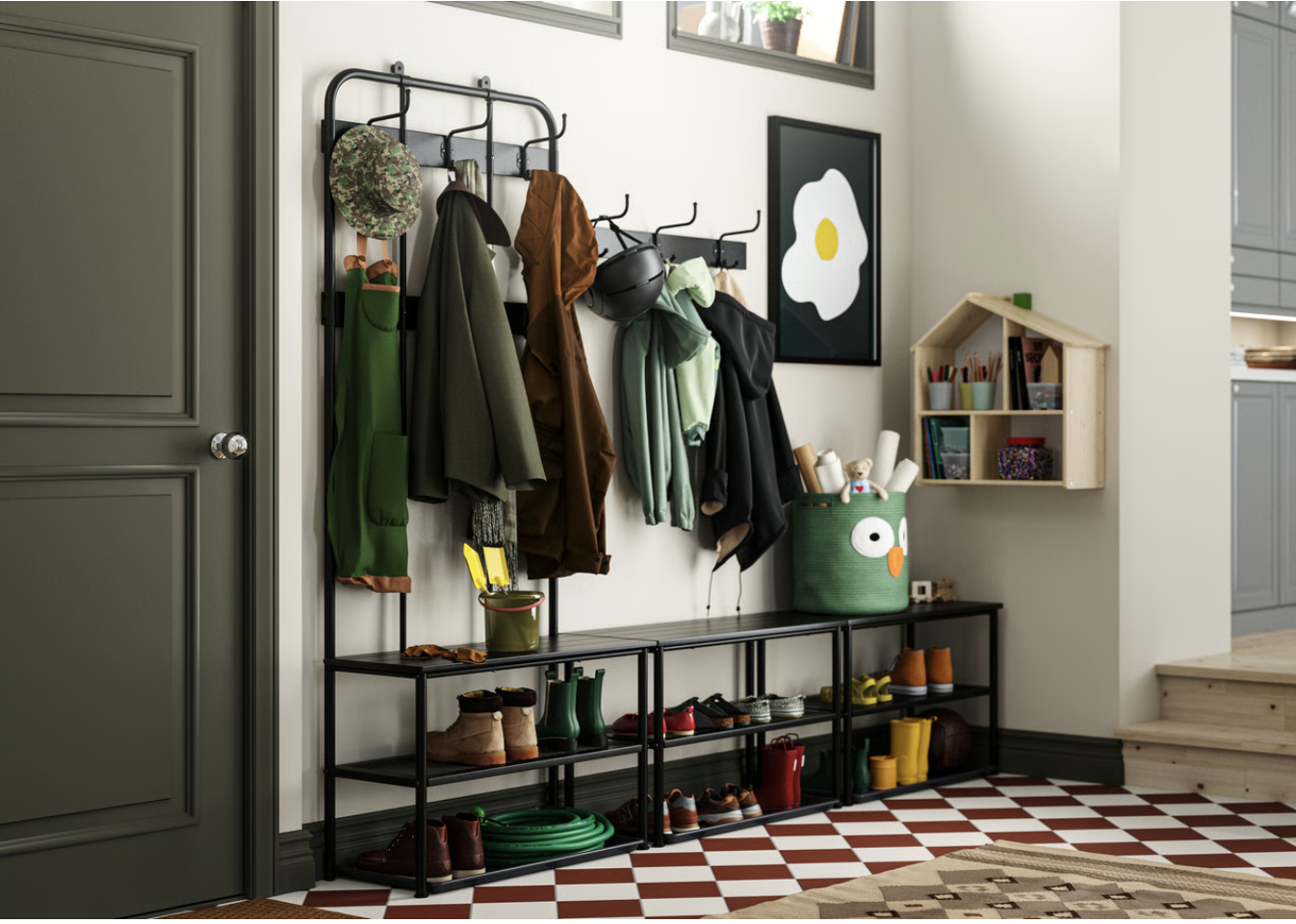Buy Nothing, Get Everything: The Surprisingly Non-Culty Cult of Sharing
A Brief History of the Buy Nothing Movement
The Buy Nothing Project was founded in 2013 by two friends, Rebecca Rockefeller and Liesl Clark, in Bainbridge Island, Washington—a place that already understood the value of community, resourcefulness, and compost. Tired of the constant cycle of buying and discarding, they created something better: a hyper-local gifting economy rooted in abundance, not scarcity.
Their radical idea?
What if we simply gave things away?
No money. No bartering. No pressure. Just neighbor-to-neighbor generosity.
It worked. Not because people are inherently thrifty (though let’s be honest, free is an excellent price), but because it tapped into something deeper: the desire to connect, to live more sustainably, and to keep good things in use instead of in landfills.
From that seed, a global movement bloomed. Today, thousands of Buy Nothing communities around the world are quietly reshaping the way we think about ownership, value, and waste. Instead of tossing perfectly good items, people pass them along. Instead of impulse buying, they ask their neighbors. It’s not about “making do”—it’s about making less go further.
In a world built on endless consumption, this is what a circular economy looks like at the neighborhood level—and it’s kind of beautiful.
My Buy Nothing Origin Story (a.k.a. Porch Piracy for Introverts)
I joined our local Buy Nothing group during COVID. Remember that time? When touching a doorknob felt like playing biological roulette? Yeah. So the idea of swinging by someone’s porch, grabbing a mystery bag, and not having to make small talk? Honestly an introvert’s dream. It was like trick-or-treating for grown-ups—except you knew exactly what you are getting.
But here's something I quickly learned:
There’s a secret to being picked for the good stuff.
You ready?
Don’t be an asshole.
That’s it. That’s the secret sauce.
If you see a post and just comment “Dibs” or “Throwing my hat in the ring,” you’re basically telling the gifter, I put zero effort into this and will probably ghost you too. It’s lazy. It’s forgettable. And it’s kind of insulting—especially if the person giving it away is parting with something that once had sentimental value, like their kid’s toys or their sanity.
Instead, show a little personality. Say why you want the item. Say what you’ll do with it. Say your kid is obsessed with dinosaurs and won’t shut up about parasaurolophuses. People are more likely to pick someone who actually seems excited and thoughtful—someone who sees value in the item, not just another score for the garage hoard.
Case in point:
Someone in my group once posted a Herman Miller Nelson bubble lamp. Gorgeous. Iconic. Mid-century magic. But I don’t think most people realized what it was. So I wrote a thoughtful, borderline poetic reply about how much I loved that design and was happy to rewire it if needed. Guess what? I got it. Cleaned it and rewired it. And now it’s glowing proudly in my home like the design-savvy beacon it was born to be.
Benefits of the Buy Nothing Lifestyle (Besides the Obvious One: Free Crap)
1. You meet your neighbors.
No, really. You’ll get to know people by their porch decor and punctuality. You’ll learn who has a newborn (they post at 3 a.m.), who has chickens, and who has opinions about expired yogurt.
2. You save money.
One day, I casually asked the group if anyone had an automated juicer collecting dust. BAM. Someone offered one up. It’s old, it’s got some ‘character,’ but it works like a charm—and now we use it every week. It’s the kind of thing I probably wouldn’t have splurged on new, but thanks to Buy Nothing, I’m basically living my best citrus-forward life for free.
3. It’s shockingly sustainable.
Every time you gift or receive something, you’re keeping it out of the landfill. You're an environmentalist now. Go ahead, add it to your dating profile.
4. Emotional validation.
There’s something oddly satisfying about someone being so excited to receive your leftover moving boxes or your kid’s old Crocs. For a brief, shining moment, your clutter has meaning.
The Best Stuff to Give (or Shamelessly Ask For)
Look, you could give away that stack of mismatched takeout containers, and someone will take them. But if you really want to make Buy Nothing magic happen, focus on the sweet spot: useful stuff people don’t want to pay full price for but still really need. Here are the MVPs of the gifting economy:
1. Kid Stuff (a.k.a. The Shortest-Lived Purchases on Earth)
Children grow out of clothes, toys, and entire life phases faster than you can say “$65 balance bike.” Why spend a fortune on things they’ll use for three months max before deciding they now hate dinosaurs and only love garbage trucks?
Buy Nothing groups are goldmines for high chairs, baby swings, puzzles with half the pieces still intact, and Montessori toys your toddler will ignore in favor of the cardboard box it came in.
2. Home Products and Small Appliances
Toaster ovens, humidifiers, coffee grinders, waffle makers—basically anything you bought with big adulting energy and now don’t use. Someone out there is hoping to try homemade waffles exactly one time. Be their hero.
Also: I once asked for an automated juicer. Got one. It’s old, maybe haunted, but we use it every week. Peak Buy Nothing win.
3. Organizational Stuff
Bins, baskets, drawer dividers, IKEA cube storage, command hooks—these are the unsung heroes of adulthood. People LOVE this stuff.
4. Tools and DIY Supplies
Power drills, paintbrushes, screwdrivers, extra caulk, extension cords, random brackets you swore you’d need “one day”—perfect Buy Nothing material. You may never use that belt sander again, but someone out there is starting their “I fix things now” phase and will cherish it like an heirloom.
5. Workout Gear
Resistance bands, yoga mats, hand weights, or that Pilates ring you used once before deciding you'd rather emotionally spiral on the couch—just gift it. Someone else is on Week One of their fitness journey and is ready to pretend this time is different.
6. Weird-but-Useful Items
A 3-foot tall fake ficus? A mushroom-shaped lamp? An unopened fondue set from your wedding registry? Put it out there.Buy Nothing thrives on weird, random finds. The stranger the item, the more excited someone gets.
The Unspoken Rules (That Everyone Totally Speaks About)
Buy Nothing groups are not the Wild West. They’re more like an unmoderated HOA with feelings. A few rules to survive:
Don’t ghost. If you say you’ll pick something up, actually pick it up. Otherwise, you’ll get labeled a “no-show,” which is the Buy Nothing equivalent of social death.
No flipping. Don’t try to resell the free teak sideboard you just scored. People will find out. People always find out.
Don’t be greedy. Yes, you could ask for all five sets of dishes, but do you want to become That Person? You don’t.
Say thanks. A simple “thank you” goes a long way. Bonus points for a picture of the gifted item being used or enjoyed. Triple bonus points if you dress your dog in the outfit and send a photo.
Put in a little effort. Remember, this isn’t a giveaway from a faceless brand. It’s your neighbor, parting with her late mother’s collection of antique bundt pans. Give her something to smile about.
So, Is This a Cult?
Technically no. But is it an organized group with a shared ideology, specific rules, social hierarchy, and a tendency to overshare in long Facebook comment threads? Also no... unless your group is particularly enthusiastic.
But the Buy Nothing vibe is ultimately wholesome: a little chaotic, deeply human, and driven by the wild hope that maybe we can build a better world without throwing everything in the dumpster.
Joining a Buy Nothing group is like joining a chaotic extended family. You’ll witness kindness, weirdness, and the occasional awkward exchange involving scented candles and foot spas. You’ll declutter your house and fill your heart (and maybe your garage again, but with better stuff this time).
So if you haven’t joined one yet, go search Facebook for your local group. And if you have joined but never posted—just know that someone out there is dreaming of the exact broken IKEA shelf you’re too lazy to deal with.
Give freely. Receive graciously. And above all:
Don’t be a jerk in the comments.









